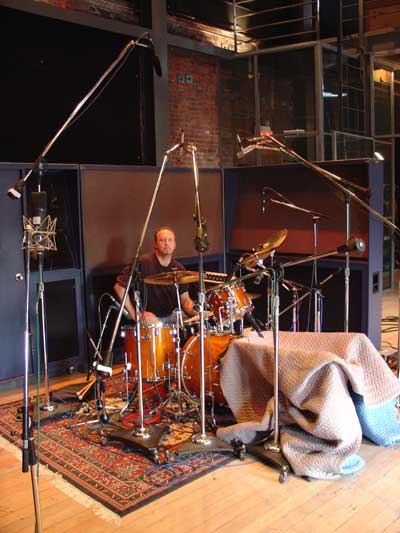Studio Drummer – Less Is More
*LESS IS MORE!*
It’s often hard to understand this until you’ve played sessions for a long time. But take my word for it. It is the biggest rule of studio playing that you must learn to embrace.
Listen to David Beal lay it down on Unchain My Heart by Joe Cocker.
Fantastically solid playing. No frills and un-needed bells and whistles.
Just exactly what the song requires!
Listen to all the greats here. The execution, the groove and effect of their playing is top shelf and yet most often you’ll find that there is very little going on. You’ll notice the space. The air in their playing. The simplicity of the fills. Yet what they’re playing is highly refined and perfect for the song.
Knowing what not to play is what takes the years of experience and refinement. Of course this is not always the case and you’ll hear more complexity at times for differing types of music but it is the general rule. I highly advise you to not try to reinvent the wheel here.
Practice a state of mind when you listen to a song where you are truly listening to all aspects of the song.
Listen intently to the lyric of the song, the emotion of the song, the key points of emotion in the song. Listen to the dynamic or the ebb and flow of the song. Where does the song rise in emotion or intensity? Are there points in the song that move you emotionally or where certain chord changes or melody or lyric move you that you could support, enhance or subtlety mark in your playing. Very important! Listen to the vocal and make note of key moments such as emotions, fills or entries where you don’t want to ‘walk on the vocal’ as they say, meaning that you don’t want to clutter or distract the listener.
*YOU WANT TO SUPPORT AT ALL TIMES.*
Make note of rhythmic phrases that other melodic instruments are catching and understand and internalize the rhythmic phrase and make note of them on your chart. For example make a musical decision in this case whether you’re going to strongly mark that rhythmic phrase or perhaps just catch elements of it. Instead of adding crashes you could just catch the phrase with your bass drum while still grooving over top of it. You might decide to allow the upper structure instruments to catch it and play right through it, which also may be the appropriate decision to make. There are times when if everybody jumps on a phrase it becomes ponderous.
The more you think this way as a studio musician the more in step you are with the music, the artist and the producer. This brings up another fact that






